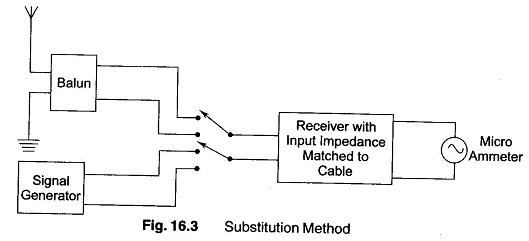RF UHF field strength meter circuit:
There are two general methods available for determination of RF UHF field strength meter circuit.
One is the standard antenna method. In this, use is made of an antenna in which the relationship between the field strength of the radio wave and the equivalent voltage that the wave induces in the antenna. The field strength is then determined by measuring this equivalent induced voltage and making use of the relationship between it and the field strength.
The second method of measuring field strength is known as the standard field generator method or the substitution method. It consists of comparing the strength of the radio wave with a field of known strength produced by a standard field generator.
At frequencies above 300 MHz, it is more practical to deal with power than with voltage or current. Loop antennas used are not satisfactory at these frequencies and therefore it is customary to use either half wave dipoles, or a directional antenna such as a simple array, a horn or a parabola.
At very high frequencies, such antennas can be assumed to have negligible loss resistance, so that a substantial amount of power delivered is radiated and virtually all of the power that is absorbed from a passing radio wave is delivered to the load impedance associated with the antenna.
These considerations cause field strength measuring equipment intended for use at very high frequencies to be modified somewhat, as compared to the corresponding equipment intended for use at short wave and lower frequencies.
In the standard field generator method, the standard field can be determined from the radiated power and the antenna gain.
In the substitution method shown in Fig. 16.3, the input to the co-axial line can be switched from the receiving antenna to a signal generator, which is then adjusted to deliver the same power to the co-axial line as does the actual radio wave of unknown field strength.
The relationship between the power which the signal generator delivers to the line, and the field strength of the radio wave is then given by the equation
where
- ε — field strength
- Pr — load power
- G — antenna power gain in terms of the receiving antenna.
This arrangement requires that the signal generator be calibrated in terms of the power that it delivers to a terminated co-axial line, instead of in terms of the voltage that it develops across a resistance.

